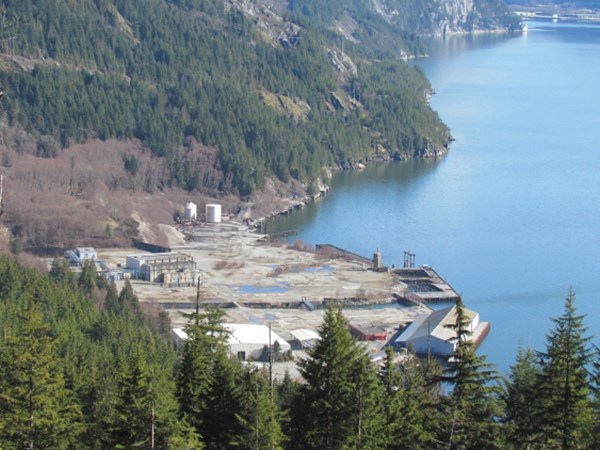The Pembina Institute took aim at Woodfibre LNG in its latest release and the company is none to pleased about it.
The July 7 infographic from the environmental policy think-tank calculates the projected upstream impact of the liquefied natural gas facility slated for southwest of Squamish on Howe Sound.
According to the Pembina Institute’s graphic, 24 extra wells would need to be drilled per year to support the facility. It would contribute 0.81 million tonnes of carbon pollution per year and use a half million cubic metres of freshwater per year. The figures are based on the $1.6-billion Woodfibre LNG facility having a capacity of 2.1 million tonnes of LNG per year once it comes online in 2020, according to the Institute.
“Generally we are trying to support a conversation about LNG, where there are impacts and there are opportunities to reduce those impacts,” Matt Horne, BC associate director at the Pembina Institute, and a member of the BC government’s Climate Leadership Team, told The Squamish Chief.
Byng Giraud, Woodfibre’s LNG vice-president, corporate affairs and country manager, was pointed in his response to the graphic, calling it “disappointing,” and “inaccurate.”
“Pembina is somebody we have been in conversations with informally over the last few months. They indicate they are an organization that works collaboratively. This is a bit of a bolt out of the blue,” he said. “Frankly it is inaccurate and based on faulty assumptions.”
Giraud said the whole graphic is based on the assumption that if you build a new facility that new wells would need to be built.
“The reality is, over the past decade, B.C. production has been decreasing while American production has been increasing,” he said. “The notion that a small facility like this would cause new wells to be drilled is false. It is a cause and effect that can’t be shown.”
A facility the size of Woodfibre LNG will not send someone out to drill new wells, Giraud added.
“These are things that already exist, we are simply using existing capacity.”
The Pembina Institute created the infographic for anti-LNG group My Sea to Sky, Horne said.
According to Horne, the statistics are derived from information from the environmental assessments for the projects or statements from the proponents. Some information is also taken from the institute’s B.C. Shale Scenario Tool, a planning tool created in partnership with the Pacific Institute for Climate Solutions, about 18 months ago.
“For a data level of LNG, which is an uncertain question in itself, the estimates of upstream impacts are about as accurate as we have,” Horne said.
The Canadian Environmental Assessment Agency (CEAA) used the tool as a way to assess the Woodfibre LNG project. Woodfibre LNG was granted its federal environmental assessment in March.
Giraud said the federal government’s greenhouse gas assessment done by Pembina originally “acknowledged that the Woodfibre LNG project may not result in an increase in GHG emissions.”
Horne said the institute’s work aims to put the liquefied natural gas discussion in a broader context. “The emission numbers – they are different depending on the LNG project, how big it is and how it was designed, but they are all increases in emissions as well so it raises questions about what the province’s overall plan is and whether or not we are going to get a plan on track to reach our climate targets,” he said.
According to Giraud, the heads of Woodfibre LNG aim to make a final investment decision on the project within the next year. He added he hopes some hiring for early jobs on the project will begin before the end of the year.
***Please note an early version of this story misidentified the Pembina representative, as Max Maximilian Kniewasser when it was Matt Horne.



